 |
|
|
| (Information by Peter Kessler, with additional information by Mick Baker and Phil Tate, from The Oxford History of England: Anglo-Saxon England, Sir Frank Stenton, from the Oxford Online Dictionary of National Biography, Barbara Yorke (2004), from The Earliest English Kings, D P Kirby (1992), from Kings and Kingdoms of Early Anglo-Saxon England, Barbara Yorke, from the Imperial Gazetteer of England and Wales, John Marius Wilson (1870-1872), from A Brief History of the Anglo-Saxons, Geoffrey Hindley (Constable & Robertson Ltd, 2006), from A History of Britain, Simon Schama (BBC Books, 2003), and from External Links: Encyclopaedia of Earth, and Anglo-Saxons: A Brief History (Historical Association), and Anglo-Saxon England (Encyclopaedia Britannica), and Westminster Abbey, and The Rouen Chronicles (View from the Left Bank).) |
|
|
| 1066 - 1087 |
William I 'the Conqueror' |
Duke of Normandy. Crowned, London, in Dec. Died 9 Sep. |
| 1066 - 1068 |
 The last native British earl of Corniu (Cornwall) is deposed by William in 1066 as he tightens his grip on the newly-conquered country. At first, only the south can be considered as being securely held, and even then only after rebellions have been quelled, with castles being built in places like Okehampton (see feature link). William also invites the Jews of Rouen to enter the country so that feudal dues can efficiently be collected - this is England's first large-scale influx of members of the Jewish Diaspora. Initial Jewish settlement is in London alone, although Oxford sees settlement from about 1075. Given Rouen's long history of Jewish habitation since the Roman period, these are likely to be Ashkenazi Jews. The last native British earl of Corniu (Cornwall) is deposed by William in 1066 as he tightens his grip on the newly-conquered country. At first, only the south can be considered as being securely held, and even then only after rebellions have been quelled, with castles being built in places like Okehampton (see feature link). William also invites the Jews of Rouen to enter the country so that feudal dues can efficiently be collected - this is England's first large-scale influx of members of the Jewish Diaspora. Initial Jewish settlement is in London alone, although Oxford sees settlement from about 1075. Given Rouen's long history of Jewish habitation since the Roman period, these are likely to be Ashkenazi Jews. 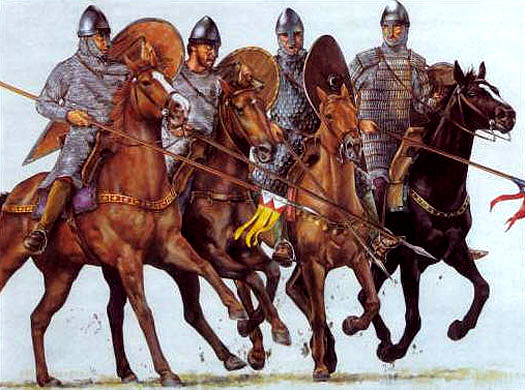 The Norman conquest of Britain owed much to good fortune, but once achieved it was enforced by military strength and a prolific castle-building programme The Norman conquest of Britain owed much to good fortune, but once achieved it was enforced by military strength and a prolific castle-building programme |
|
| The [Welsh](CymruPrinces.htm#Welsh Princes) princes, Blethyn and Rhiwallon ap Cynfyn of Gwynedd, Deheubarth, and Powys, resist the invaders as part of their supporting role for Harold Godwinson. They join Eadric the Wild of Mercia in an attack on Norman forces at Hereford in 1067, and Earl Edwin of Mercia with Earl Morcar of Northumbria in a further attack in 1068. |
|
|
| 1070 |
Earl William FitzOsbern of Hereford invades the [Welsh](CymruPrinces.htm#Welsh Princes) kingdom of Brycheiniog and defeats 'three kings of South Wales', although none of these hail from Brycheiniog. However, 'King Bleddyn' of Brycheiniog is also defeated, by Bernard de Neufmarché (Newmark in its English form). It seems from claims which are made by Bernard in 1088 that he conquers the entire kingdom and sees it as his own domain (and he apparently goes on to slay Rhys ap Tewdwr Mawr of Deheubarth in 1093). |
|
| 1086 - 1087 |
In the most memorable event of his reign after the conquest itself, William orders the creation of Domesday Book, a catalogue of all holdings in the country, so that he can accurately judge what he has won during his years of putting down constant rebellions and securing complete control of England. 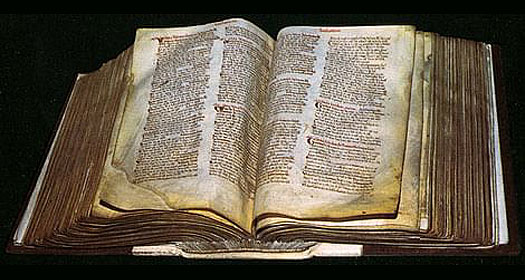 Domesday Book actually consists of two volumes, with the 'Great Domesday Book' being shown here, which provides an invaluable historical record of England's buildings and possessions in 1086-1087 Domesday Book actually consists of two volumes, with the 'Great Domesday Book' being shown here, which provides an invaluable historical record of England's buildings and possessions in 1086-1087 |
|
| 1087 - 1100 |
William II 'Rufus' |
Son. Died in a 'hunting accident'. |
| 1090 |
Norman forces under Robert Fitzhamon, lord of Gloucester conquer the [Welsh](CymruPrinces.htm#Welsh Princes) kingdoms of Gwent and Morgannwg, giving the Norman conquerors of England control of all of south-east [Wales](CymruPrinces.htm#Welsh Princes). |
|
| 1093 |
Rhys ap Tewdwr Mawr of Deheubarth has been successful in fighting off several attempts to dethrone him, but now he dies in mysterious circumstances while resisting the expansion of Norman power in neighbouring Brycheiniog. Deheubarth has apparently been conquered, and is carved up between rival Norman lords into cantrefi or lordships. Elfael soon also falls. |
|
| 1100 - 1135 |
Henry I 'Beauclerke' |
Died 1 Dec, food poisoning, from 'a surfeit of lampreys'. |
| 1113 - 1114 |
Gruffydd ap Rhys of Deheubarth returns from Ireland intent on reclaiming the throne of South [Wales](CymruPrinces.htm#Welsh Princes). Henry II sends orders to have him arrested but he finds refuge with Gruffydd ap Cynan in Gwynedd. Henry destroys the impending Welsh alliance by offering Gruffydd ap Cynan gifts of tribute-free lands. Gruffydd ap Rhys and his brother flee to Ystrad Towy, from where they begin to attack Norman strongholds in Ceredigion and North Pembroke (the heartland of former Dyfed). Several castles are destroyed or severely damaged while England suffers from a plague and is unable to respond. Flemish mercenaries are offered lands in Wales, particularly in Pembroke, in return for stemming the advance, and Gruffydd is only able to restore a reduced Deheubarth, with the rest still being held by Norman lords. 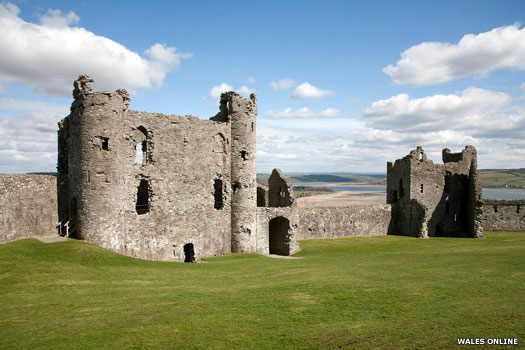 The rough stone walls of Llanstephen Castle in the modern county of Carmarthenshire were put up by the Normans in order to solidify their gradual conquest of South Wales, but they didn't always command the castle - in 1146 it fell to Deheubarth The rough stone walls of Llanstephen Castle in the modern county of Carmarthenshire were put up by the Normans in order to solidify their gradual conquest of South Wales, but they didn't always command the castle - in 1146 it fell to Deheubarth |
|
| 1120 |
William Adelin |
Son. Died on the White Ship in 1120. |
| 1119 |
 Henry I defeats an invasion of his Norman lands by Louis VI of France at the Battle of Brémule. In the same year one of his knights in England, Robert de Crevecoeurm, erects a motte-and-bailey fort at Leeds in Kent to act as a Norman military post (see feature link). Henry I defeats an invasion of his Norman lands by Louis VI of France at the Battle of Brémule. In the same year one of his knights in England, Robert de Crevecoeurm, erects a motte-and-bailey fort at Leeds in Kent to act as a Norman military post (see feature link). |
|
| c.1126 |
 Dividing control of his treasury from the other main duties in his court, Henry creates the position of 'Lord High Treasurer' in the early English Parliament. He also hands Rochester Castle to the new archbishop of Canterbury, William de Corbeil (see feature link). Dividing control of his treasury from the other main duties in his court, Henry creates the position of 'Lord High Treasurer' in the early English Parliament. He also hands Rochester Castle to the new archbishop of Canterbury, William de Corbeil (see feature link). |
|
| 1135 |
Upon the death of Henry I his only living legitimate child becomes de jure monarch as stipulated in his will. Matilda, the 'Lady of England' had in 1114 been married to Holy Roman Emperor Henry V, but when he had died in 1125 she had been recalled to England. In 1127 she had married Prince Geoffrey Plantagenet of Anjou and Maine in order to secure an heir. Unfortunately, she is in Anjou when her father dies, and her quick-moving cousin secures the throne for himself with the support of the barons, who do not relish having an Anjou baron as their king. So begins a long civil war known as 'the Anarchy'. 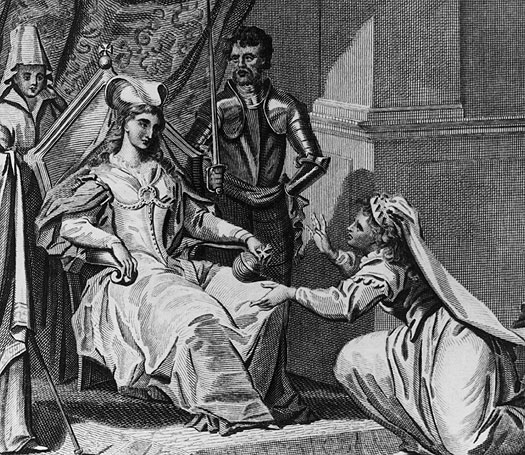 Empress Matilda, widow of the former Holy Roman Emperor Henry V, was the daughter and chosen successor of Henry I of Normandy and England, but her throne was quickly usurped by her cousin, Stephen Empress Matilda, widow of the former Holy Roman Emperor Henry V, was the daughter and chosen successor of Henry I of Normandy and England, but her throne was quickly usurped by her cousin, Stephen |
|
| 1135 |
Matilda |
Daughter of Henry I and heir, but usurped by Stephen. |
| 1135 - 1141 |
Stephen |
Nephew of Henry I. Usurper. Captured at the Battle of Lincoln. |
| 1139 |
With Robert de Mowbray having been removed from his office as earl of Northumberland for rebelling against William Rufus in 1095, the title has been vacant ever since. Now King Stephen is pressured into appointing a new earl by David of Scotland. Henry of Scotland is selected for the position, signifying Scotland's strong role in the region at this time. He is also father to the future king of the Scots, Malcolm IV. |
|
| 1141 |
Matilda |
Declared queen at Winchester, but uncrowned. Withdrew. |
| 1141 - 1148 |
Stephen is captured at the Battle of Lincoln in February 1141 and Empress Matilda is declared queen, or the 'Lady of England', at Winchester, with the support of Nigel, the deposed 'First Lord High Treasurer'. However, she alienates the citizens of London with her arrogant manner. She fails to secure her coronation, with the disaffected Londoners joining a renewed push from Stephen's queen so that the empress is placed under siege at Winchester. 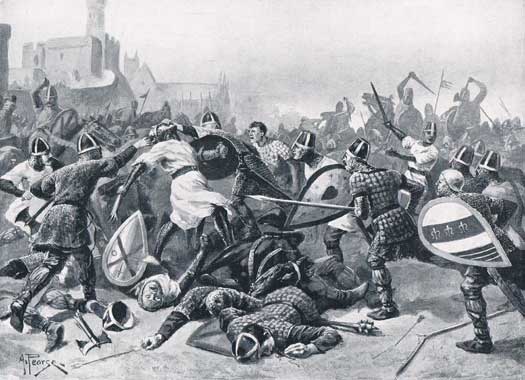 The Battle of Lincoln in 1141 was a defeat for King Stephen when he was captured while fighting on foot - his axe shaft had splintered and he was struck by a stone (thrown, it seems, by the figure on the left), and he was immediately seized by his helmet - taken from Hutchinson's Story of the British Nations (about 1923) The Battle of Lincoln in 1141 was a defeat for King Stephen when he was captured while fighting on foot - his axe shaft had splintered and he was struck by a stone (thrown, it seems, by the figure on the left), and he was immediately seized by his helmet - taken from Hutchinson's Story of the British Nations (about 1923) |
|
| Matilda manages to escape to the west but, while commanding her rearguard, her brother is captured by the enemy. Matilda is obliged to swap Stephen for Robert on 1 November 1141. Stephen re-imposes his authority. In 1148, after the death of her half-brother, Matilda finally returns to Normandy, leaving her son, Henry Plantagenet, to fight on in England. |
|
|
| 1141 - 1154 |
Stephen |
Restored. Exhausted by fighting, Adopted Henry Plantagenet. |
| 1153 |
 The death of his eldest son, Eustace, knocks the fight out of Stephen, and he agrees to adopt Henry Plantagenet as his heir. The barons are very supportive of this scheme as it ends two decades of civil war. Stephen, suddenly feeling the full weight of his approximately fifty-eight years in age, dies the following year. He is buried in Faversham Abbey of St Saviour (see feature link), which he had founded in 1147, alongside the bodies of his wife and son. The Plantagenet dynasty now controls a still-very Franco-orientated English ruling class. The death of his eldest son, Eustace, knocks the fight out of Stephen, and he agrees to adopt Henry Plantagenet as his heir. The barons are very supportive of this scheme as it ends two decades of civil war. Stephen, suddenly feeling the full weight of his approximately fifty-eight years in age, dies the following year. He is buried in Faversham Abbey of St Saviour (see feature link), which he had founded in 1147, alongside the bodies of his wife and son. The Plantagenet dynasty now controls a still-very Franco-orientated English ruling class. |
|
 |
|
|

 The last native British earl of Corniu (Cornwall) is deposed by William in 1066 as he tightens his grip on the newly-conquered country. At first, only the south can be considered as being securely held, and even then only after rebellions have been quelled, with castles being built in places like Okehampton (see feature link). William also invites the Jews of Rouen to enter the country so that feudal dues can efficiently be collected - this is England's first large-scale influx of members of the Jewish Diaspora. Initial Jewish settlement is in London alone, although Oxford sees settlement from about 1075. Given Rouen's long history of Jewish habitation since the Roman period, these are likely to be Ashkenazi Jews.
The last native British earl of Corniu (Cornwall) is deposed by William in 1066 as he tightens his grip on the newly-conquered country. At first, only the south can be considered as being securely held, and even then only after rebellions have been quelled, with castles being built in places like Okehampton (see feature link). William also invites the Jews of Rouen to enter the country so that feudal dues can efficiently be collected - this is England's first large-scale influx of members of the Jewish Diaspora. Initial Jewish settlement is in London alone, although Oxford sees settlement from about 1075. Given Rouen's long history of Jewish habitation since the Roman period, these are likely to be Ashkenazi Jews.  The Norman conquest of Britain owed much to good fortune, but once achieved it was enforced by military strength and a prolific castle-building programme
The Norman conquest of Britain owed much to good fortune, but once achieved it was enforced by military strength and a prolific castle-building programme Domesday Book actually consists of two volumes, with the 'Great Domesday Book' being shown here, which provides an invaluable historical record of England's buildings and possessions in 1086-1087
Domesday Book actually consists of two volumes, with the 'Great Domesday Book' being shown here, which provides an invaluable historical record of England's buildings and possessions in 1086-1087 The rough stone walls of Llanstephen Castle in the modern county of Carmarthenshire were put up by the Normans in order to solidify their gradual conquest of South Wales, but they didn't always command the castle - in 1146 it fell to Deheubarth
The rough stone walls of Llanstephen Castle in the modern county of Carmarthenshire were put up by the Normans in order to solidify their gradual conquest of South Wales, but they didn't always command the castle - in 1146 it fell to Deheubarth Henry I defeats an invasion of his Norman lands by Louis VI of France at the Battle of Brémule. In the same year one of his knights in England, Robert de Crevecoeurm, erects a motte-and-bailey fort at Leeds in Kent to act as a Norman military post (see feature link).
Henry I defeats an invasion of his Norman lands by Louis VI of France at the Battle of Brémule. In the same year one of his knights in England, Robert de Crevecoeurm, erects a motte-and-bailey fort at Leeds in Kent to act as a Norman military post (see feature link). Dividing control of his treasury from the other main duties in his court, Henry creates the position of 'Lord High Treasurer' in the early English Parliament. He also hands Rochester Castle to the new archbishop of Canterbury, William de Corbeil (see feature link).
Dividing control of his treasury from the other main duties in his court, Henry creates the position of 'Lord High Treasurer' in the early English Parliament. He also hands Rochester Castle to the new archbishop of Canterbury, William de Corbeil (see feature link). Empress Matilda, widow of the former Holy Roman Emperor Henry V, was the daughter and chosen successor of Henry I of Normandy and England, but her throne was quickly usurped by her cousin, Stephen
Empress Matilda, widow of the former Holy Roman Emperor Henry V, was the daughter and chosen successor of Henry I of Normandy and England, but her throne was quickly usurped by her cousin, Stephen The Battle of Lincoln in 1141 was a defeat for King Stephen when he was captured while fighting on foot - his axe shaft had splintered and he was struck by a stone (thrown, it seems, by the figure on the left), and he was immediately seized by his helmet - taken from Hutchinson's Story of the British Nations (about 1923)
The Battle of Lincoln in 1141 was a defeat for King Stephen when he was captured while fighting on foot - his axe shaft had splintered and he was struck by a stone (thrown, it seems, by the figure on the left), and he was immediately seized by his helmet - taken from Hutchinson's Story of the British Nations (about 1923) The death of his eldest son, Eustace, knocks the fight out of Stephen, and he agrees to adopt Henry Plantagenet as his heir. The barons are very supportive of this scheme as it ends two decades of civil war. Stephen, suddenly feeling the full weight of his approximately fifty-eight years in age, dies the following year. He is buried in Faversham Abbey of St Saviour (see feature link), which he had founded in 1147, alongside the bodies of his wife and son. The Plantagenet dynasty now controls a still-very Franco-orientated English ruling class.
The death of his eldest son, Eustace, knocks the fight out of Stephen, and he agrees to adopt Henry Plantagenet as his heir. The barons are very supportive of this scheme as it ends two decades of civil war. Stephen, suddenly feeling the full weight of his approximately fifty-eight years in age, dies the following year. He is buried in Faversham Abbey of St Saviour (see feature link), which he had founded in 1147, alongside the bodies of his wife and son. The Plantagenet dynasty now controls a still-very Franco-orientated English ruling class.